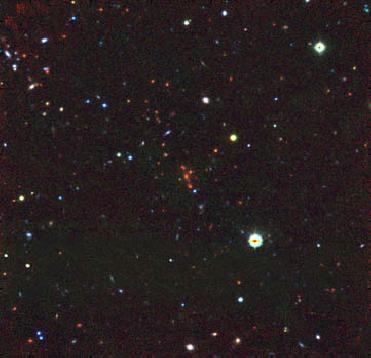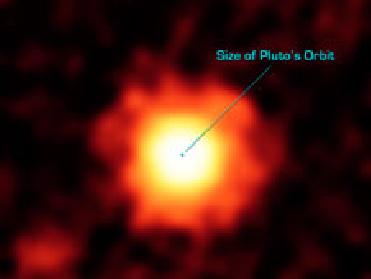
The distant, massive galaxy cluster as it existed when the Universe was less than five billion years old, or one third its present age. Old galaxies in the cluster appear as a small group of red dots in the center where the X-rays appear. Image Credit: ESO/ESA/Mullis.
WASHINGTON (PTI): A team of American and Japanese scientists have discovered 22 extremely distant galaxies which may have born 787 million years after Big Bang.
The researchers at Carnegie Observatories conducted the broadest survey to date of galaxies from about 800 million years after the Big Bang and have found 22 early galaxies.
They have confirmed the age of one of the galaxies by its characteristic hydrogen signature at 787 million years post Big Bang. "Since all the galaxies were found using the same dropout technique, they are likely to be of the same age," said lead author Masami Ouchi.
The finding is the first age-confirmation of a so-called dropout galaxy at that distant time and pinpoints when an era called the reionization epoch likely began, the Carnegie Institution for Science said.
"While looking for 'dropout' galaxies we used a new technique called progressively redder filters that reveal increasing wavelengths of light and watch which galaxies disappear from or 'dropout' of images made using those filters," Ouchi said.
What makes this study different is that we surveyed an area that is over 100 times larger than previous ones and had a larger sample of early galaxies, the study to be published in the December issue of the Astrophysical Journal said.
They made their observations from 2006 to 2009 in the Subaru Deep Field and Great Observatories Origins Deep Survey North field and they then compared their results with data gathered during other studies.
 Previous Article
Previous Article Next Article
Next Article












The Indian Air Force, in its flight trials evaluation report submitted before the Defence Ministry l..
view articleAn insight into the Medium Multi-Role Combat Aircraft competition...
view articleSky enthusiasts can now spot the International Space Station (ISS) commanded by Indian-American astr..
view article